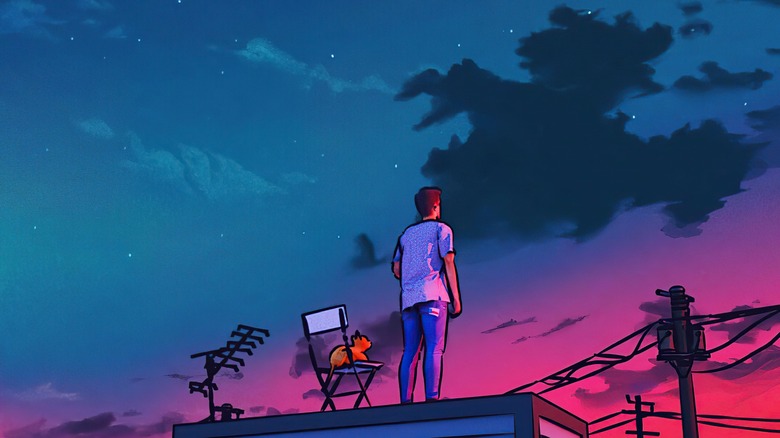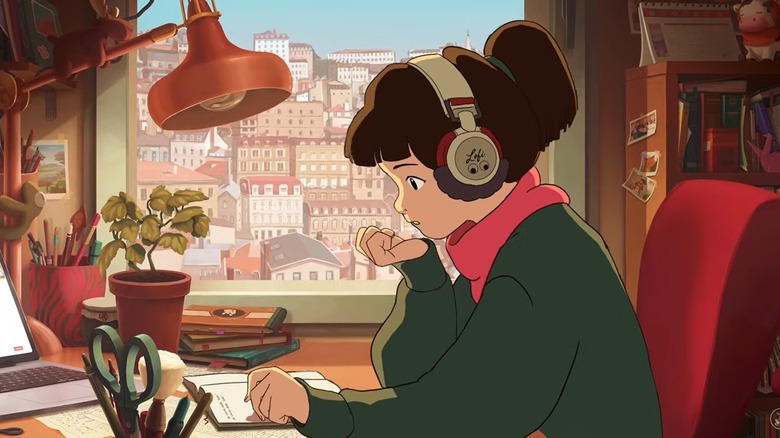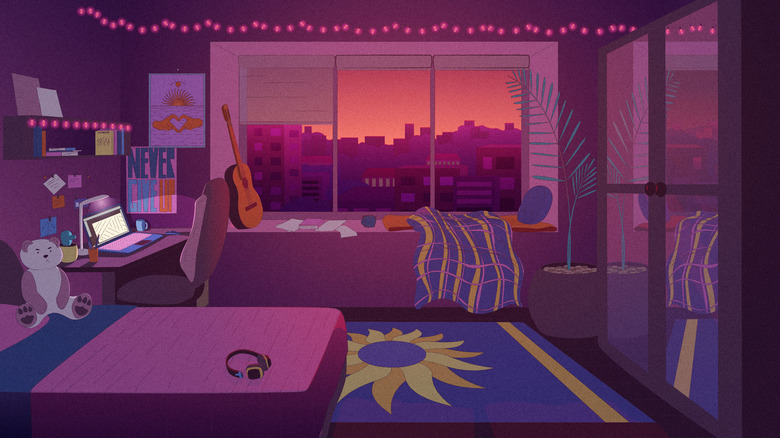What Is Lo-Fi Music (And How Did It Become So Popular)?
If you spend a lot of time chained to your desk, you too may have logged onto a 24-hour lo-fi livestream, and bopped to its chill beats while you work. But what even is lo-fi, and how did it come to dominate YouTube's algorithm?
The term lo-fi is actually short for "low fidelity" — the opposite of a crisp high-fidelity record in which a track has a high sound production value. A low-fidelity piece might be muffled or obscured by other noises, and sometimes there may even be mistakes by the musician on the record. Punk music is often characteristically lo-fi for example — the low-quality recording gives it that raw DIY sound. However, when people talk about lo-fi nowadays this is rarely what they mean.
The lo-fi that has exploded in popularity online is actually a distinct genre of music, not just a production style. It is a form of down-tempo electronic music, that normally has hip-hop beats looped through it. According to Masterclass, its most common characteristics include drum loops, jazz chords, and the sampling of other music. It is chill, easy to listen to, and makes great background noise. Lo-fi music is also fairly easy to make and can be produced from a person's bedroom using pretty basic music production software, a phenomenon that has allowed it to blossom and gradually take over the internet.
LoFi Girl
A large part of the popularity of lo-fi is simply the product of an extremely successful meme: The "LoFi Girl." According to internet historians at Dazed magazine, the looped animation of a young girl studying with her cat by a window originated from YouTube user ChilledCow, who joined YouTube in 2015. For whatever reason the relaxing ambient music and cute video caught on, managing to accumulate millions of hits in just a few years. Even if you haven't watched it — YouTube has probably recommended that you do.
The original stream of the video was taken down for a brief time due to copyright claims in 2017 and 2020. The stream that was taken down in 2020 amassed over 13,000 hours of playtime, making it one of the longest streams in internet history (via the Verge). The channel eventually ran two different streams which collectively received over 797 million views before they vanished for a third time in 2022. Today, the Lofi Girl channel is once again up and running.
Following the incredible success of the original video, LoFi Girl has spawned many copycat incarnations — and you can even find a unique LoFi Girl for whatever you're in the mood for. There are many country-specific LoFi Girls for example — such as the Brazilian "Bossa Nova LoFi Girl" for instance — and there are many lo-fi videos related to whatever your interests may be — such as "Medieval LoFi Girl" and "Sci-Fi LoFi Girl."
The science of lo-fi
If you're into lo-fi, you might listen to it because you find it particularly relaxing — and there is some science to back this up. Although listening to some kinds of music can be distracting, any type of music can boost your mood and reduce stress, which may serve as a motivational tool when you're pulling an all-nighter.
On the other hand, it is generally agreed that for music to be really effective at aiding concentration, it needs to have several distinct characteristics; It should be relatively slow, have a predictable rhythm, and be devoid of any lyrics. The chill tempo and lack of lyrics that characterize lo-fi make it perfect for easy listening, providing minimal distractions while blotting out background noise.
Many people listen to 24/7 live streams while cracking out an essay or sorting through some spreadsheets and some detractors of lo-fi attribute its success to its inherent boringness — similar to elevator or furniture music. Writing for The New Yorker, journalist Amanda Petrusich went as far as to suggest that lo-fi may be a generational phenomenon — a byproduct of millennial burnouts, who cannot log off even if they want to — and who need musical wallpaper to get through their day, sanity intact.


